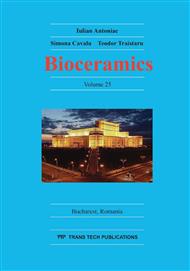p.349
p.356
p.360
p.366
p.372
p.381
p.387
p.391
p.397
A Pilot Study Regarding the Biomechanical Behaviour of Endosteal Implants
Abstract:
An endosteal implant is an alloplastic material surgically inserted into a residual bony ridge primarily as a prosthodontic foundation. Root form implants are the design most often used. Although many names have been applied, the 1988 National Institutes of Health consensus, statement on dental implants and the American Academy of Implant Dentistry recognized the term root form. Misch developed a generic language for endosteal implants in 1992. This language is presented in an order following the chronology of insertion to restoration. In formulating the terminology, five commonly used implant systems in the United States were referenced. Ten years later, the dramatic evolution in the implant market led to reconsideration of the terminology. At the moment, over 3000 different implant systems are on the market, but the comparative evaluation is not done by objective means.
Info:
Periodical:
Pages:
372-378
Citation:
Online since:
November 2013
Authors:
Keywords:
Price:
Сopyright:
© 2014 Trans Tech Publications Ltd. All Rights Reserved
Share:
Citation:


